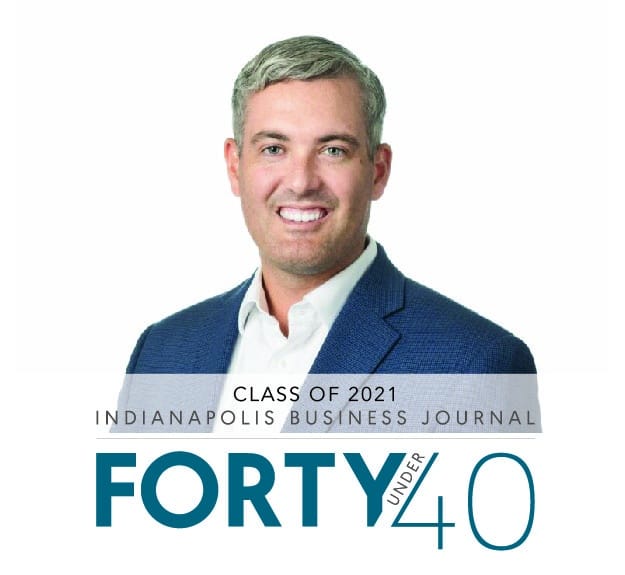Case Study: Finding the Right Policy Through Expert Attention
BY ZACK CONNER | Property & Casualty Advisor

For many businesses, it’s assumed that their insurance coverage is, at the least, enough to suit their individual needs. Upon closer inspection for many, however, their existing policies may not be the right fit or possibly even inadequate for their needs. In situations where I have examined prospective clients, the reality of a business’s insurance not meeting their needs has often come to light. Through personal attention and practiced expertise, we are able to find the right policy to not only save the client money, but also to keep them secured and protected.
In my time as a Property and Casualty Advisor for Conner Insurance, I have continued our agency’s long-established track record of working with nursing homes to provide the best possible coverage and rates to suit their needs. As such, inconsistencies and inefficiencies in prospective clients’ policies stick out, even if they are not fully aware of the extent of how much more thorough and optimally priced their coverage could be. A standout example of working with a nursing home client to provide them a plan optimized for the prices and policies to suit their needs has been the instance of our relationship with a company I will refer to as NursingCare.
I first reached out to NursingCare with a phone call, as part of our ongoing effort to actively engage with prospective clients who we can help with coverage. This call arrived at an opportune time, as NursingCare had been one branch of an umbrella organization including a university and several community-oriented and care organizations, and was curious to see if Conner could be competitive with their broker of over 25 years. In their situation as a single part of this larger institution, they knew that their policies were similar to the university’s and might not be so well-suited to their needs as a nursing home. Being part of the university’s workers’ compensation program, for instance, had been causing inefficiencies and affecting their claims. After some research, I discovered that the university’s claims were actually financially hurting NursingCare. With this in mind, they were ready to explore their options for independent coverage. I offered to look into their current insurance situation to see where their current policies were lacking and what adjustments could be made, and I quickly found that their situation was worse than initially believed.
As a part of their umbrella coverage, they were one organization out of several and had been frustrated by the lack of attention to their individual needs, and that lack of attention quickly became apparent through closely examining their coverage situation. The management of NursingCare, at first, believed that the most we would be able to find was more competitive premium prices, but they were dumbfounded at the reality of their situation. Their rates for Professional Liability were not competitive, and we were able to provide better options to suit their needs. This news was accompanied by their underinsured status in some areas and totally uninsured status in others.
For crime coverage, encompassing categories including forgery & alterations, money and security, etc., they had a $10,000 limit in coverage across the board. Not only would this leave them vulnerable in the event of a significant crime claim, but they had also been drastically overpaying, with premiums of approximately $3,000 per year. Their sexual abuse and molestation coverage, an unfortunate but necessary area of coverage for nursing homes, gave protection of over $1 million, but lawsuits involving sexual abuse can range up to $5 million, and they did not have the addition of this coverage into an overall umbrella. They were not signed up for the state-run patient compensation fund (PCF). At its core, the PCF allows care providers to pay a fee, and caps liability to up to $1.25 million. The vast majority of care providing organizations in the state of Indiana are signed up for this service, but NursingCare was not. Most importantly, their name was not even listed on the overarching university organization’s insurance umbrella. They had been paying for umbrella coverage through the university for years, and yet, in the event of an incident, they would not be able to access coverage. All of these red flags combined to form one big picture: an organization that was overpaying for premiums, was underinsured in several vital areas, and not covered at all in others. Under their current coverage, NursingCare could have been one or two major incidents away from financial ruination.
Upon seeing my report detailing the extent of their insurance issues, the executives of NursingCare were in disbelief. They confronted their broker with my report, and after an unsatisfactory conversation, were ready to progress with Conner to find coverage that could save them money, accommodate their specific needs, and insure them across vital areas necessary to stay protected.
Conner’s history of working with carriers specializing in nursing homes, as opposed to that of their previous carriers, who only specialized in general coverage, meant that we could find them far more competitive rates and better overall protection. Where their crime coverage had been $10,000 across the board, it was now $100,000, and their rates were now $47 per month as opposed to $250. Five times the coverage for a fraction of the cost, saving them hundreds per month in this area alone. We offered better rates for their workers’ compensation program, and signed them up for the state’s patient compensation fund. Lastly, we created a personalized umbrella that would cater to their specific needs and actually cover them in the event of a claim. Previously, NursingCare had been paying $115,000 per year for their inadequate coverage. With our collective attention to detail, and experience picking the right specialized carriers to suit their needs, NursingCare received significantly more comprehensive coverage and cut their annual insurance costs to $95,000 per year. They saved approximately 17% on their overall costs, but gained an invaluable amount of added security under their new plan.
By closely examining their situation, I was able to better understand NursingCare’s needs by making the extra effort to uncover the details and calling upon my own expertise from previously working within their field. Their new coverage gave them the peace of mind to continue to provide the best possible care, with added protection from unfortunate accidents or incidents. They had previously assumed that their coverage was fine and only thought that perhaps they were being overcharged, but they were drastically uninformed. Afterwards, with an explanation of what services and policies could fit their needs, coupled with superior rates and personalized attention, NursingCare was in a better place in terms of finances, coverage and their confidence in the quality of their insurance.
TO LEARN MORE ABOUT ZACK CONNER, CLICK HERE
ZACK CONNER'S LINKEDIN












